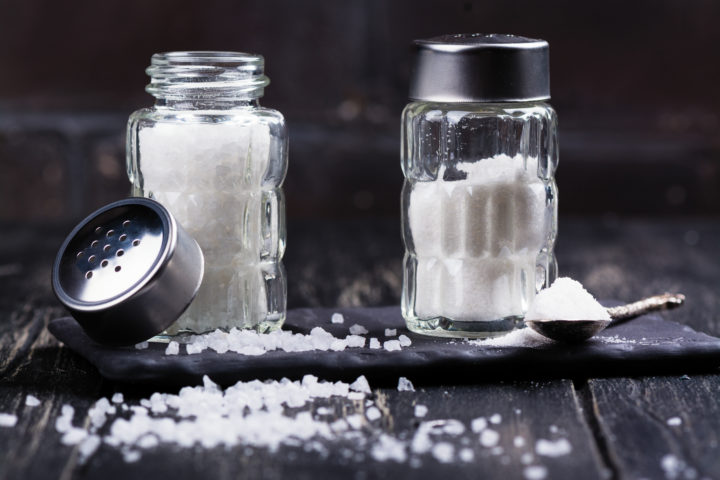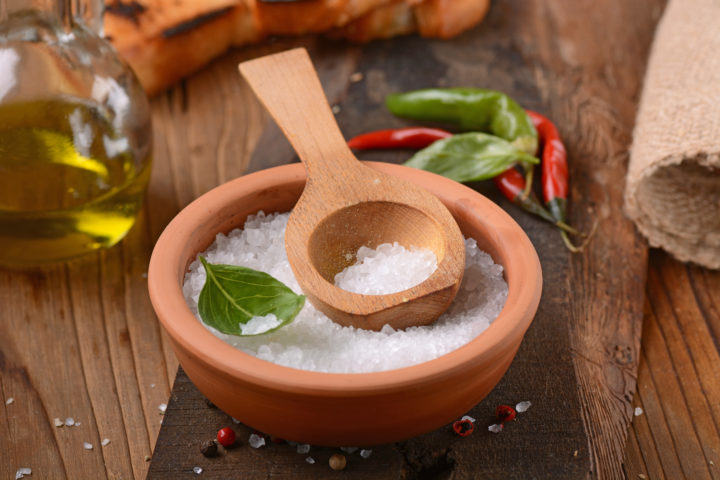
Salt is a staple for humans. It’s an essential part of our diet and a key element for flavor and health.
There are several varieties of salt available, many of them natural and some with added components. Amongst added components, the most famous one is iodine.
You must have noticed that the table salt you buy is usually labeled as iodized salt. Why go through the trouble of adding iodine to salt, and how does it affect our food?
Let’s take a look at iodized salt vs salt to see how they compare and how things stack up.
Iodized Salt VS Salt – The Key Elements
What Is Iodized Salt?
Essentially, iodized salt is table salt mixed with various salts of iodine. Chemically, table salt is usually sodium chloride, though small amounts of other salts like potassium chloride may also be present.
When making iodized salt, a tiny amount of potassium iodide or sodium iodide is added to the mix.
What Is Iodized Salt Used For?
Iodine is a micronutrient that’s essential for several functions of the human body. The functioning of the thyroid is at the top of the list, though iodine has also been shown to be essential for preventing intellectual and developmental disabilities.
For most of the world, the conventional diet is deficient in iodine. This puts a huge chunk of the population at risk of diseases like goiter, while also inhibiting the development of mental capabilities.
Pregnant and lactating women need a fair amount of iodine for their own needs as well as for the child.
Considering how important iodine is, its deficiency in regular diets is a serious issue. Some areas, especially coastal areas get sufficient iodine from their regular diet. However, this isn’t always true.

For example, in the US, the region around the Great Lakes and Pacific Northwest had a serious problem with iodine deficiency in the early 1900s.
Similarly, though India has a large coastline, almost the entire population is at risk of iodine deficiency.
Similar patterns play out across the globe, which means that most of the human population is at risk of iodine deficiency.
The simplest solution to the iodine deficiency problem was introducing a better dietary source of iodine. For most countries, this turned out to be salt.
Adding minute amounts of iodine salts to conventional table salt usually provides enough of the daily iodine requirements for humans.
Salt fortified with iodine, or iodized salt, is a way to ensure that populations at risk of iodine deficiency get enough of the nutrient in their diet.
In many jurisdictions, salt sold for human or animal consumption must be fortified with iodine. However, the implementation has varying degrees of laxity.
Is Iodized Salt Good For You?
Iodized salt is good for you. Iodine is an essential micronutrient, although most regions have a diet that’s deficient in iodine. This means a huge chunk of the global population is at risk of iodine deficiency.
Consuming iodized salt combats this risk. Salt’s fortification with iodine means that people consuming iodized salt will get their daily recommended dose of iodine through their meals.
Just half a teaspoon (slightly more than 3 grams) of iodized salt should be enough to provide sufficient iodine for consumption.
This amount is easily managed through conventional meals and most people don’t need to make changes to their lifestyle or diet.
How Much Iodine Is In Salt?
The amount of iodine in salt can vary depending on the country or jurisdiction. Since salt fortified with iodine is manufactured to counter iodine deficiency, its amount varies depending on the expected deficiency of iodine.
In many countries, including the US, there are about 45 micrograms of iodine in every gram of salt. Simply put, this means that a little more than 3 grams of salt should be enough to provide the recommended daily intake of iodine.
Usually, this comes out to be half or three-quarters of a teaspoon of salt. The recommended daily intake of iodine for adults is 150 micrograms.
Which Is Healthier: Sea Salt Or Iodized Salt?
Sea salt is often touted as a healthier option compared to regular table salt. However, there are no major nutrient differences between normal (unfortified) table salt and sea salt.
Sea salt might contain salts like sodium chloride, potassium chloride, calcium chloride, and others. On the other hand, table salt is just sodium chloride.
The presence of these other salts means there are trace amounts of other nutrition elements in sea salt, like potassium and calcium. Although these amounts are too small to make any significant nutrition difference.
Besides, most of these additional nutrients are better obtained through other, healthier means and a better diet.
Iodized salt, though, is table salt fortified with iodine. As we know, this is an essential micronutrient, which is not as easily available through other options.
As such, iodized salt is a healthier option when compared to sea salt.
Conclusion
A comparison of iodized salt vs salt is essentially a consideration of two food items that are pretty much the same. The only difference – and it’s a pretty important one – is that iodized salt is fortified with iodine.
Essentially, iodized salt is normal salt, with very small amounts of iodide salts added to it.
This small addition doesn’t affect the taste, flavor, or behavior of conventional salt. However, fortification with iodine means that the salt now contains an essential micronutrient that isn’t as easily available in conventional diets.
Using iodized salt is a healthier and better option as compared to normal salt. This is all the more important if you live in a country or region where the soil (and thus the food) is known to be deficient in iodine.
